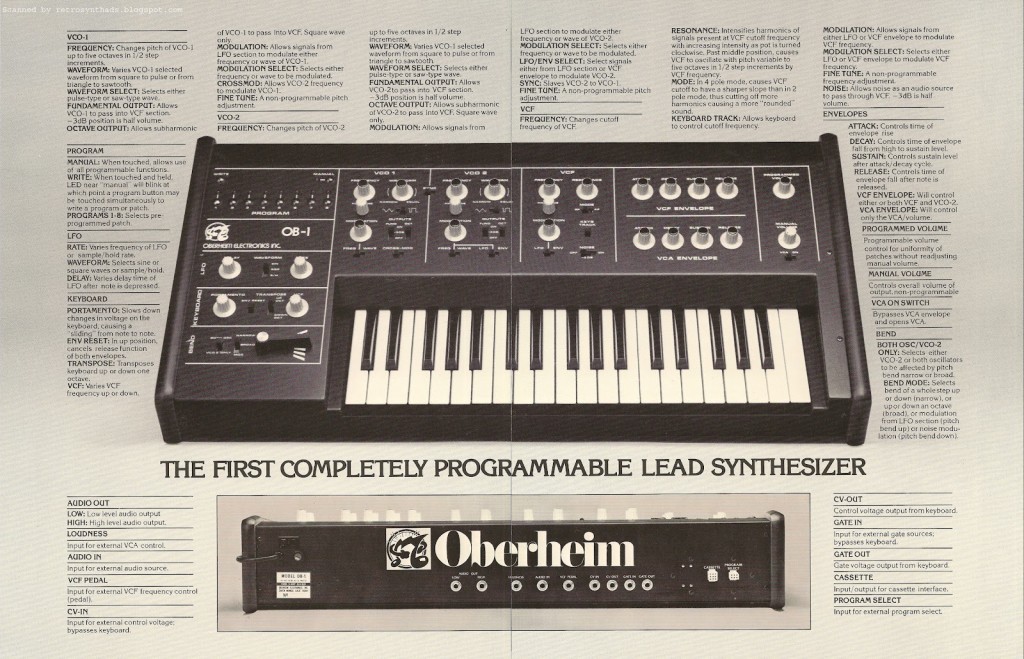The 1978 (or 77, or 79… ish…) Oberheim OB-1 is an underrated gem in Tom Oberheim’s incredible synthesizer legacy. So it’s about time it get its due. Here’s a short documentary by software developer GForce explaining why the OB-1 was such a great instrument.
Judged merely on specs, you can see why the OB-1 gets overshadowed by other synths of its era. It lacked the Z80 microprocessor of the OB-X and Prophet 5, so while it was a breakthrough in patch programmability, the parameter storage was limited. And it just never got the notoriety of some of its brethren. Bigger polys and better-known monosynths – plus Oberheim’s own SEM and OB-X – just often get the limelight.
But it’s about time for the OB-1 to get a second look:
It’s just an elegant, eminently musical monosynth. In fact, if you were to launch a ’78 monosynth now, this one might hold up better for modern tastes – just add proper digital patch storage. The layout of the design is simply brilliant, with cross-modulation and Tom’s signature morphable, continuously variable pots for filtering, modulation, and timbral control always at the ready. There are few synths from the ’70s or today that offer this much sound shaping with such a minimal, neatly organized array of controls.
Anyway, I’ll leave the rest to Dave Spiers, who narrates this video. The veteran developer is the creator of the Phat Boy MIDI controller and co-founder of GForce Software, who among other things, have made what I feel are hands-down the best Oberheim recreations in software (and that’s a competitive category). He’s also been a prolific music tech journalist and, of course, I’m biased to people who have done that.
Huh, a documentary on the OB-1 from GForce…

I’m going to stick with 1978 as the birth year. 1977 at NAMM could be a preview, and Oberheim advertised it in ’78, including this elegant ad for Contemporary Keyboard (forerunner of the USA’s Keyboard, for which I was a contributing editor), and brochure from the same year, both on Retro Synth Ads.
Oh, PS – the Star Wars thing. We know for a fact the ARP 2600 was used for R2-D2. I guess the “OB-1” was a cheeky reference to the runaway success of Star Wars, which came out before the OB-1 was announced. (Think Obi Wan Kenobi.)